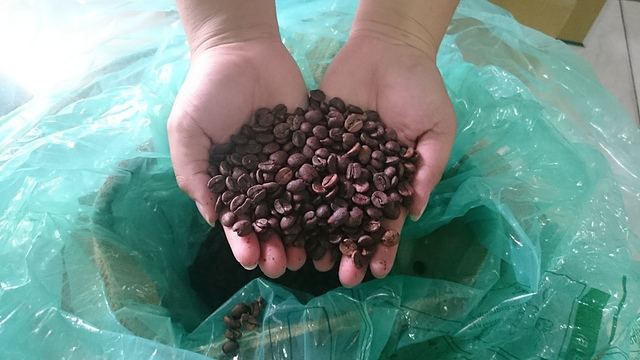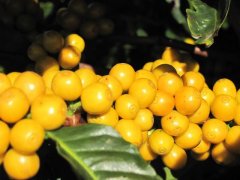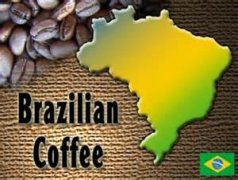How to make coffee in Brazil?

For professional baristas, please follow the coffee workshop (Wechat official account cafe_style)
Introduction:
There are many kinds of Brazilian coffee, like other Arabica coffee, the vast majority
Brazilian coffee is not washed but dried, and they are classified according to the name of the state of origin and the port of transport.
Brazil has 21 states and 17 states produce coffee, but four of them produce the largest amount of coffee.
98% of Brazil's total national output, which are the states of Parana, SaoPaulo,
The states of MinasGerais and Espirito Santo
The southern state of Parana has the most astonishing production, accounting for 50% of the total. The characteristic of Brazilian coffee is
Low acidity, suitable for moderately roasted coffee beans. Brazil is vividly compared to the coffee world.
"Giant" and "monarch" because he is the largest coffee producer in the world. There are about 3.97 billion trees there.
Coffee trees, small farmers now grow coffee accounts for 75% of Brazil's total output.
The number of people engaged in coffee production in Brazil is twice or even three times that in Colombia, which is
The third largest coffee producer in the world.
Huagu Manor (Fazenda LA FOLIE) is located at 1200m above sea level in Cerado, Minas.
The soil is fertile, the water quality is pure, farmers drink raw water directly, and the climate has a large temperature difference between day and night.
The climate is dry, and the overall quality of this area is the most stable among the coffee producing areas in Brazil. Syracuse for Brazil
The famous high-quality coffee producing areas have a relatively fine treatment method, which adopts the traditional Brazilian method of natural drying of pulp.
(Pulped Natural) treatment; due to coffee beans with belt pulp (Pulp) and pectin (Mucilage)
Dry together, thus retaining higher contents of organic matter, minerals and soluble solids.
This kind of coffee bean has a strong aroma, slightly sweet with the flavor of Qiaokoli, as well as something that is not easy for ordinary people to detect.
Citric acid has a sour taste, excellent Body taste and a long finish. The coffee beans cultivated in Huagu Coffee Manor are
Yellow bourbon and red catuai,mundo novo are Arabica beans.
This batch of steam special treatment has the flavor of brown sugar and sweet potato, and steam beans were used in late 1980.
When it is used as a formula bean, it is found that the coffee has a different taste. From 1999 to now, the United States and Europe began to have it.
Because of the large demand for steam beans, this special steam treatment method can make Arabica beans better.
Flavor, there are also new aroma features, which can reduce the miscellaneous smell of coffee and increase the aroma and sweetness.
Sweet potato flavor of brown sugar, sweet aftertaste, this treatment is also in line with European import standards, so
Formal mass production supplies a lot of demand in the market. The baking degree is recommended to be 40 stroke 65 (inside / outside). Bake this one.
It is extremely challenging. If you want to make a comprehensive formula coffee with a good friend, first bake a single product, and then mix other products.
Beans. Because of the special steam treatment, the appearance of raw beans is purple, very special, and
Raw beans smell like brown sugar and sweet potatoes.
Product name: Brazilian Xilado steam special treatment of brown sugar and sweet potato flavor
(Brazil Cerrado Fazenda LA FOLIE steamed)
Country: Brazil (Brazil)
Producing area: Cerado, Minas
Manor: Huagu Manor (Fazenda LA FOLIE)
Variety: yellow bouborn, red catuai, mundo novo
Grade: 18 items
Altitude: 1200 m
Treatment: special treatment of water vapor
Harvest time: NumberA
Appearance: the color of raw beans is purple, which is very special
Flavor description: sweet potato, brown sugar aroma, good aftertaste, sweetened with beans
Important Notice :
前街咖啡 FrontStreet Coffee has moved to new addredd:
FrontStreet Coffee Address: 315,Donghua East Road,GuangZhou
Tel:020 38364473
- Prev

Brazilian Coffee Yellow Bourbon Variety Introduction-Yellow Bourbon Brazilian Coffee Price Report
About Yellow Bourbon Amarello/ Yellow Bourbon Share: facebook PLURK twitter Coffee beans are basically divided into Arabica and Robasta beans. There are 2,000 to 3,000 varieties of arabica beans, all derived from tibeka Typica in Ethiopia and bourbon in Yemen, transplanted from Central America or Asia.
- Next

What kind of coffee beans are good for Brazilian coffee? Brazilian coffee beans are good and cheap for making espresso.
For professional baristas, please follow the coffee workshop (official Wechat account cafe_style) Brazil is vividly compared to the giant and monarch of the coffee world. There are about 3.97 billion coffee trees there, and small farmers now grow 75% of Brazil's total coffee production. The number of coffee producers in Brazil is twice or even three times that of Colombia, which is the largest coffee producer in the world.
Related
- Detailed explanation of Jadeite planting Land in Panamanian Jadeite Manor introduction to the grading system of Jadeite competitive bidding, Red bid, Green bid and Rose Summer
- Story of Coffee planting in Brenka region of Costa Rica Stonehenge Manor anaerobic heavy honey treatment of flavor mouth
- What's on the barrel of Blue Mountain Coffee beans?
- Can American coffee also pull flowers? How to use hot American style to pull out a good-looking pattern?
- Can you make a cold extract with coffee beans? What is the right proportion for cold-extracted coffee formula?
- Indonesian PWN Gold Mandrine Coffee Origin Features Flavor How to Chong? Mandolin coffee is American.
- A brief introduction to the flavor characteristics of Brazilian yellow bourbon coffee beans
- What is the effect of different water quality on the flavor of cold-extracted coffee? What kind of water is best for brewing coffee?
- Why do you think of Rose Summer whenever you mention Panamanian coffee?
- Introduction to the characteristics of authentic blue mountain coffee bean producing areas? What is the CIB Coffee Authority in Jamaica?

